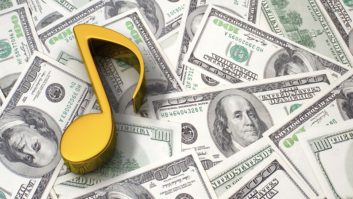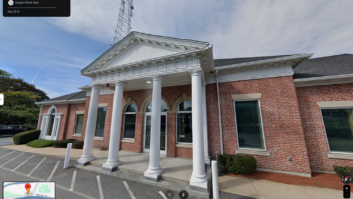Don’t Sell Morning Drive Short
Nov 16, 2006 10:15 AM, By John Snyder, Vice President, Portable People Meter Sales, Arbitron
Ever since the PPM data in Houston and Philadelphia revealed that morning drive listening estimates in PPM tended to be lower than their corresponding diary estimates, radio has been in a bit of a panic. The fear among sellers of radio is that this once sought-after daypart would lose much of its appeal and thus pricing power. If you can find higher-rated dayparts, why should buyers pay a premium for morning drive?
The answer lies beneath the rating point and takes some digging to uncover. For many stations, however, it offers virtually conclusive proof of the value of the morning daypart despite the lower overall estimate. It seems that radio under the diary system might have been overestimating morning ratings but underestimating the true value of the daypart.
I recently sat on a panel where the topic was “Engagement with Advertising.” Engagement can mean many different things but at the simplest level the question being posed is, How engaged is the audience with the advertising message? Do consumers change the channel when the ad comes on? Do they stop paying attention? Do they have an interest in the product or service that is being advertised? Will they buy the product or service? Advertising guru Erwin Ephron summed up the concept of engagement by describing it as “a cry for help from advertisers” to better understand what they are getting for their advertising dollars. Go to almost any large agency these days and they are wrestling with the issue of how to measure engagement.
So what does morning drive have to do with engagement? According to a number of different indicators in the PPM data it would appear that morning drive, while down in overall ratings, offers the best opportunity to reach an engaged audience. Even without the PPM data, it makes sense that there would be a bit of an emotional connection between the station and the listener during the AM drive. Most Americans prefer to wake up each morning to a familiar voice. The PPM data simply allows us to tell that story supported by facts.
How do you measure this connection? You can see it in a number of different analyses. The first one involves the recently released commercial audiences study, in which it was discovered that no matter the length of the commercial pod, morning drive daypart commercial audiences were higher (relative to the content audience) than in any other daypart. This was true for younger and older listeners. Morning drive audiences hold an average of 94 percent of their lead-in audience during commercial breaks ranging from one to six minutes in duration. The next-best daypart was midday, followed by afternoon drive and nights. Why would commercial audiences be higher in morning drive than afternoon drive or other dayparts? Engagement. While we might be comfortable to jump around the dial during other dayparts and risk missing the beginning of a song, it appears that listeners are more connected to morning personalities and are not as eager to abandon them during a break.
The other analysis that provides insight into morning-drive engagement is the duplication report. Running the duplication in the PPM Analysis Tool using August 2006 data reveals that virtually none of the major stations has higher sharing levels in morning drive as they do during the PM drive. Both dayparts are the same length and in all likelihood contain a commute, so why the difference? I would once again argue that it is due to the emotional connection between the morning show and audience. Alternative Houston station KBTZ (“The Buzz”) shares 35 percent of its audience with Contemporary Hit Radio KRBE-FM during the afternoon drive. In the morning, that number is essentially half that amount: 18percent. Classic Rock KKRW-FM shares 20 percent of its audience with Album Oriented Rock KIOL-FM during the afternoons, but only 10 percent during the morning drive.
This is also supported by the fact that listeners in Houston tend to listen to fewer stations over the course of the week in morning drive than during any other of the major dayparts. The July/August PPM data shows listeners tune-in to an average of 2.1 different stations during the morning drive, compared with 2.4 in midday and 2.5 during the PM drive. Fewer tuned-in stations means more loyalty to a single station and in all likelihood, higher engagement.
The audience-composition section of the PPM section reveals another byproduct benefit of the greater loyalty to a show or personality observed in the morning drive daypart. For most stations in the Houston market, PPM is showing that the audience tuning in during the morning drive daypart tends to be more similar in age than in other major dayparts. That’s very good news for advertisers looking to target a specific consumer: Morning drive allows them to pinpoint their copy to a very targeted audience. For example, Mexican Regional KTLN-FM enjoys a morning drive audience 64 percent of which is between 25 and 44. No other age cell contains more than 8 percent of the audience. During the afternoon on KTLN-FM, no two age cells add up to more than 45 percent of the audience. As another example, Contemporary Hit Radio station KBXX-FM draws an audience that is 73 percent comprised of listeners between the ages of 18 and 44. In afternoons, that age range accounts for only 59 percent of the audience. Hot AC WMHX-FM goes from two-thirds of the audience between 25 and 44 during the morning drive to 46 percent in the PM drive.
The traditional thinking in buying and selling radio goes that higher-rated dayparts are better. In some cases, this might still be true. However, for the first time, PPM and electronic measurement have allowed us to really dig below the rating point to confidently come up with other metrics that might very well be more important than the total number of listeners tuning into an average quarter-hour. Advertisers and their agencies understand this. They want to reach an engaged, targeted audience. The relationship between morning drive and the listeners is a special one, no matter how it’s measured.












